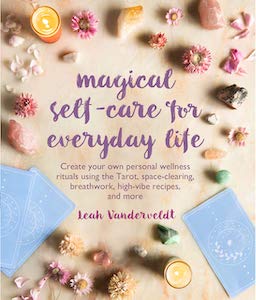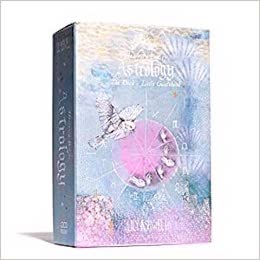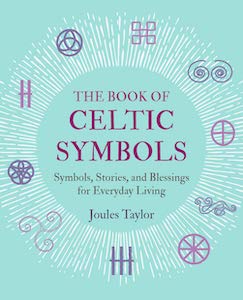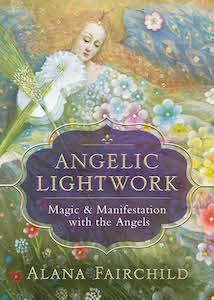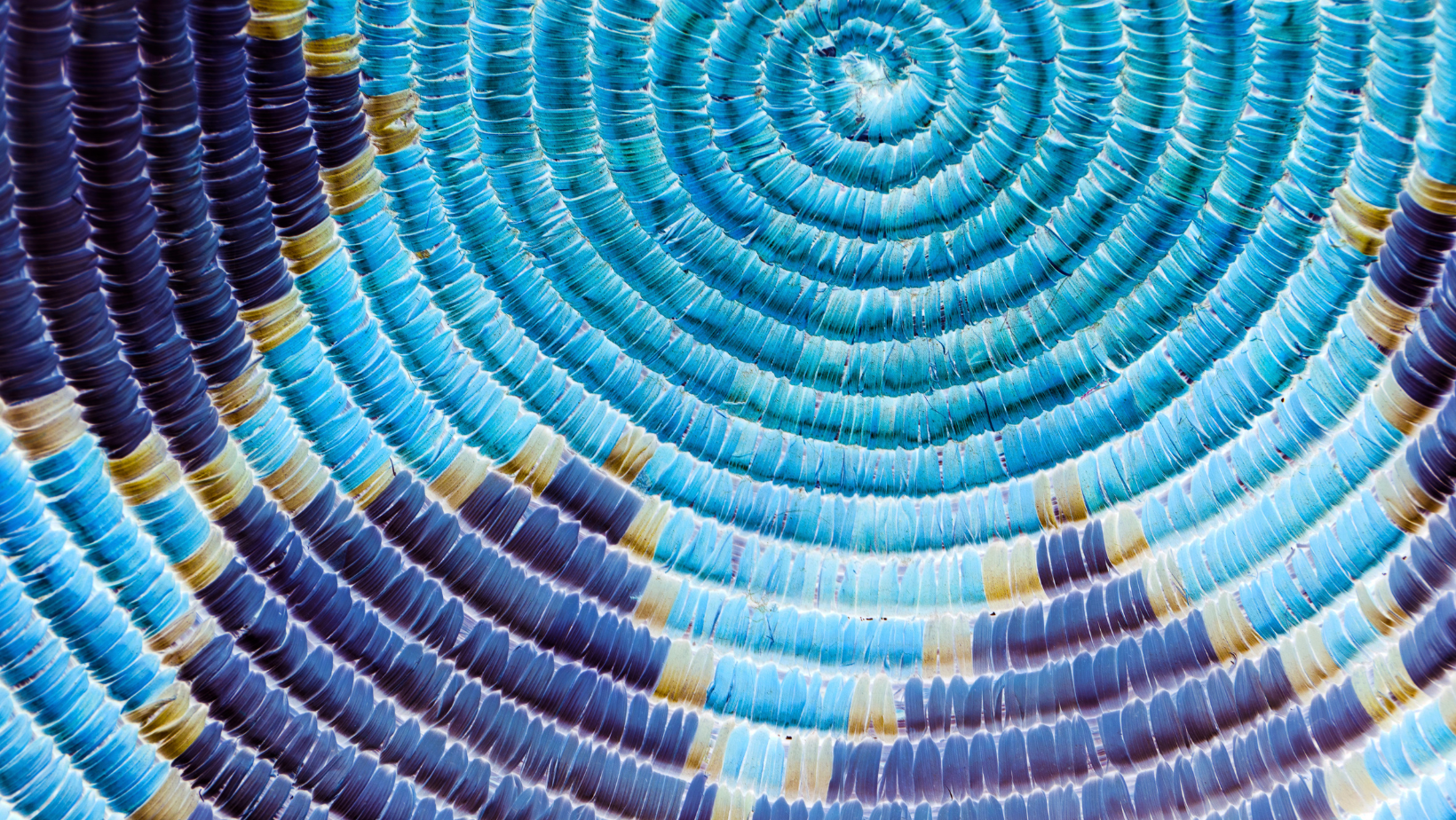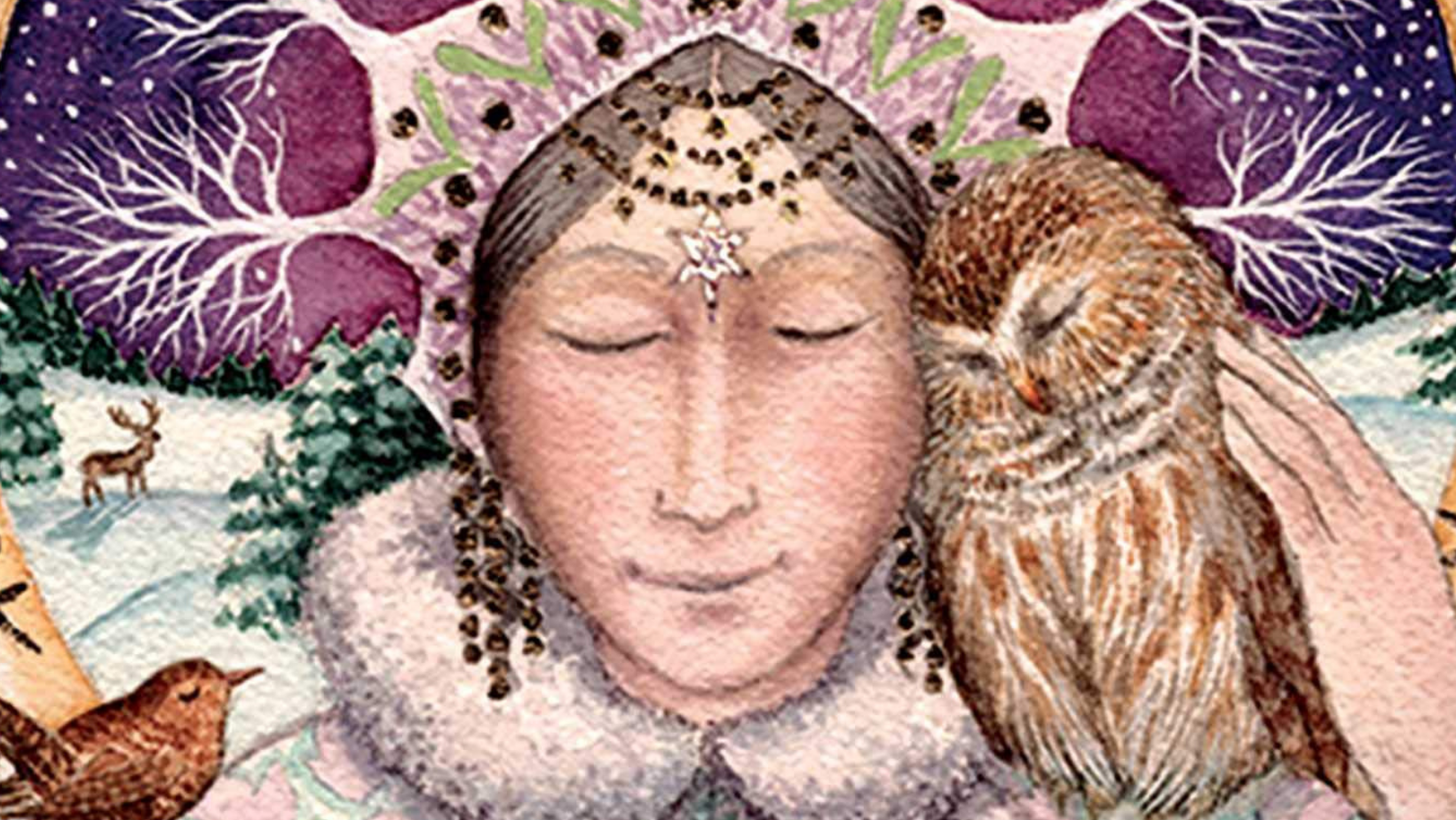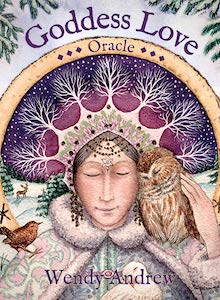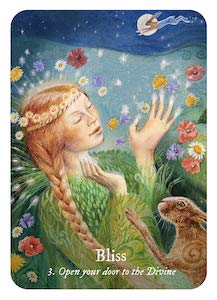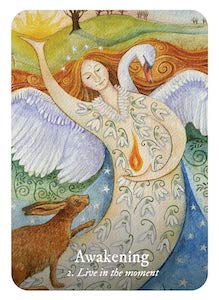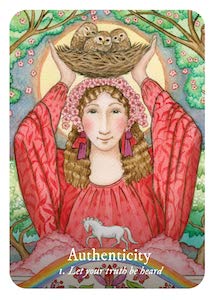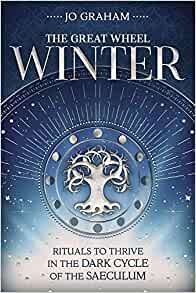
Winter: Rituals to Thrive in the Dark Cycle of the Saeculum, by Jo Graham
Llewellyn Publications, 0738763712, 211 pages, 2020
I was intrigued by the title of this book and looked forward to diving into it to familiarize myself with the saeculum in general — the season of Winter specifically. I had no knowledge of the concept of the saeculum, first mentioned by the Etruscans but also written about by the ancient Greeks and Romans. Saeculum roughly translates into the expected lifetime of an individual (80 years). It is based on the cycles of the Great Wheel that, if we live to 80 and beyond, we will experience during our life lifetime. In Winter: Rituals to Thrive in the Dark Cycle of the Saeculum, Jo Graham does a marvelous job of detailing out the concept of saeculum and also explaining each season of the Great Wheel, including what to expect. She also goes back in time to what happened during each season in both recent and ancient history to help us understand the current time of Winter.
As Graham explains, the Romans called this 80-year cycle the Great Wheel, or the wheel of generations. The Great Wheel is aligned with the seasonal nature of all life. Each cycle of the Great Wheel lasts roughly 80 years, and each of the four seasons within the Great Wheel cycle lasts approximately 20 years. Each season is further divided into periods of 10 years, including Imbolc, Belatane, Lammas, and Samhain. Therefore, we are all born in a certain season in the cycle of the Great Wheel. Graham provides charts to determine in what season you were born. I was born in Spring of the current cycle. Therefore, I experienced my youth in Spring, adulthood in Summer, maturity in Autumn, and am now entering old age in Winter. I admit gasping at being categorized as being in Old Age, but in terms of the Great Wheel, we all get to live through each of the four seasons if we are blessed to live to 80 (at which point the cycle begins again). “Every eighty years we pass through what the Classical Greeks called ekpyrosis, a destruction by fire that then allows for rebirth and the growth of new things.” 1

Graham also breaks down how each of the so-called age groups (Millennials, Baby Boomers, Gen-Xers) are going to meet the Winter (the season in which we are living now) challenges in their own unique ways. According to the Great Wheel, we entered the season of Winter around 2010. In 2020, we are in Imbolc. Winter will be nearing an end in 2030. Graham goes into detail writing about how events that have occurred since 2010 are exemplary of things that happen in the season of Winter which, like anything natural, does not have a fixed start and end date. For example, the approach of Winter could be felt in the attacks of 9/11 and the stock market crash of 2008, which happened in Samhain in the Fall season.
Winter is divided into four sections: Introduction, The Crisis Approaches, The Storm Rages, and Aftermath. There is also an extensive bibliography at the end of the book. In each section, Graham describes what to expect in each phase of Winter, what happened in a Winter seasons in times past, and includes detailed rituals to help cope/survive and ultimately thrive during this season. In addition to explaining about the Great Wheel and the seasons, Graham also writes extensively in the Introduction about the last season of Winter, 1925 – 1945, which included the Great Depression and World War II. Definitely not good times for civilization. I shuddered to think that we are in this season again.
One ritual that Graham recommended in the Introduction was to help reconnect with ancestors who you know experienced the last Winter. Without going into too much detail, the ritual involved mask-making (how the Romans honored and invited in their ancestors) and also journaling to invoke our ancestors for counsel, wisdom, and ways to cope during Winter. I loved this ritual and was happy to receive guidance from grandparents and extended family who lived through this period. I was shown that while there was hardship, families worked together and everyone in the world was in the same boat – much like today’s Winter with COVID-19.
In the section titled “The Crisis Approaches,” Graham offers a broader picture of the last cycle of Winter. She also asks us to remember where we were when this current season of Winter began (around 2010), what we were experiencing in our life at that time, what our community, country, and the world at large was also was experiencing. She brings us back further in time through another journaling exercise to 2000, just before the start of the current Winter. When I sat quietly and journaled about this time, I realized that my 18-year marriage had come to a sudden end. As Graham writes, “Winter as a season is inevitable” and it always arrives. 2
The first phase of Winter is what she describes as the “Gathering Storm,” 3 which is easy to dismiss as a gradual change in temperature, a few snowflakes. She encourages us to prepare for the Winter and not to be complacent and caught off guard. “We can get through Winter the same way our ancestors did: with planning, community, and faith.” 4 She also recommends journaling exercise with questions about our values. “Our values can help guide not just ourselves but those around us as we navigate this season.” 5 This exercise asks us to look at who we are now in this phase of Winter by answering questions on topics such as hospitality, honor, our relationship to the Earth, and how we feel about Pagan values. It was a very interesting exercise and I soon found out in the next section the relevance of the topics. As she cautions, “Remember, we cannot make good decisions about the events to come if we don’t realistically understand our own situation with its vulnerabilities and strengths and receive truthful information about events as they happen.” 6

In the section titled “The Storm Rages”, Graham helps us to prepare for the inevitable storm, including rituals to invoke Athena Strategos (for strength) and Hermes (for effective communication based on clarity and truth). She also asks us to choose what seeds we want to preserve through the Winter to plant in the Spring, not just for us personally but also for our country at large and includes a ritual to save these seeds. She also walks the reader through the process of creating a haven, once again not just for ourselves but also for others who might come to us seeking shelter from the Winter. There was a beautiful rite to Vesta to hallow the house, to protect it, and bless it, that I found quite moving. While the ritual is best done with a community, due to the pandemic I did this alone and found it equally as beautiful and beneficial. I especially like the direction to keep a candle burning (artificial) throughout the night.
Heroes are needed to get through the Winter, and the final chapter in this section deals with different types of heroes. Graham offers an exercise to determine the type of hero we are based on our temperament. Ideally, we will want to be in a community of heroes who possess different skills and strengths: communicator, warrior, helper, and conservator. The exercise revealed that I am a helper warrior. Graham includes a ritual to make a bracelet to wear as a reminder of our hero skill-type; also recommended is a community-based ritual to help all of us carry out our unique roles depending on our hero-type.
The final section is “Aftermath”. Jo includes a meditation to help us move from Winter into Spring. Included is a ritual to bring forth the seed we saved and preserved and how to decide how and when to plant it. There is also a ritual to welcome the returning Winter warriors and to honor the departed who did not survive the season. Graham concludes Winter with rituals for invoking Concordia, the daughter of Mars and Venus to “rule our interactions so that the world to come is the best we can make it” 7 and a ritual to banish Discoria, or lawlessness.
Do not expect Winter to be a quick read. I recommend reading each section slowly and engaging in the rituals, exercises, and meditations that call to you. It would have been personally helpful if I had read Graham’s first book, The Great Wheel, to have had an initial fuller understanding of the natural cycle of the Great Wheel. No doubt, the topics covered in the book are heavy, for Winter is not to be trifled with. At times, I found myself depressed, especially in reading that the coming years are those of cataclysm. But it also helped me put into perspective what is happening in the country today in terms of bad communication, unrest, a lack of empathy and civility, a pandemic, and governments turned on their heads. I very much enjoyed that Graham asked me to remember via a journaling exercise that my grandparents and extended family came through the Winter. It left me with hope that “in the early 2030s we will be charting new courses socially, economically, environmentally, and physically. Spring will be fully upon us.” 8
Anne Greco is a non-fiction writer who writes about her life experiences and travels with humor, keen observations, and the hope that her words will remind us that “we’re all just walking each other home.” Her book, Serendipity: Chance Pilgrimages, tells the story of Anne encountering her places of power. As she reconnects with herself at each site, Anne also develops a deeper understanding and appreciation of her connection to both the seen and unseen worlds. Learn more about her work here: http://annegrecowriter.com.


